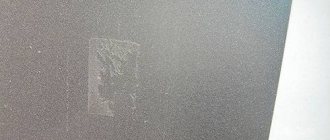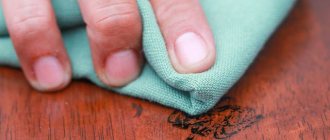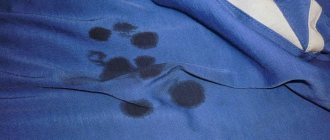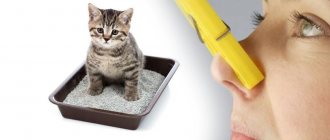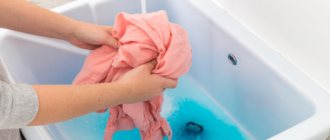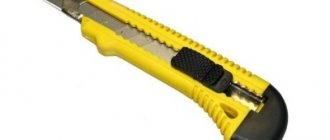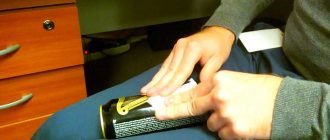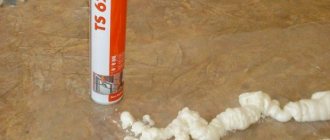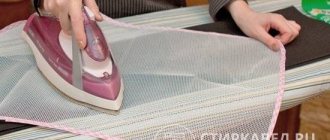The use of stationery tape often leads to an unpleasant problem - the formation of sticky, colorless marks on various surfaces, which become covered with dust over time. Which eventually turns into a stain of dirt. But you simply cannot do without adhesive tape in the household, because it helps out in many everyday situations: when you need to glue, fasten or fix something.
Traces of tape remain on metal, plastic, wood. They are removed by chemical or mechanical means. There are suitable stain removal options for every type of surface.
Household chemicals for removing tape adhesive residue
The easiest way to wipe off glue residue is to use household chemicals for various purposes. Before use, take into account the surface characteristics. Avoid aggressive products that leave streaks and cause skin irritation.
Anti-scotch sprays
Anti-adhesive tape - specialized products for removing traces of adhesive tape on various surfaces. Just spray the liquid, wait a few minutes and wipe the stain. The spray also helps remove stickers and traces of other adhesive materials. When working, it is recommended to ensure good ventilation of the room and remember that the composition is easily flammable.
Window cleaners
Window cleaners contain ammonia, which helps in dissolving sticky substances from surfaces. The liquid is loyal to demanding materials. To clean, spray the product, leave for a few seconds and vigorously wipe with a cloth.
Cleaner Cosmofen
Cosmofen is used to treat plastic windows. It removes markings, dirt, foam, glue and even resin. The plastic softens slightly, thereby eliminating minor scratches. To clean, apply liquid to a cloth and wipe away dirt. Gloves are used when working.
Melamine sponge
The melamine sponge helps thanks to its abrasive crystal surface. It is moistened and the area of contamination is actively rubbed. The method is not suitable for vulnerable and varnished surfaces. The cleaning method results in discoloration.
Melamine is not used to clean surfaces that touch food.
Taygeta S-405
The liquid is used to clean surfaces of any type. Even fabric and upholstery are suitable. The product is sprayed, left for up to 3 minutes and wiped off. Taygeta is highly flammable and produces toxic fumes. When used, they protect mucous membranes .
Grass Antigraffiti
This is a professional stain remover for removing traces of tape, chewing gum, rubber and glue. Liquid without color and pungent odor. Before use, test on a small area of contaminated surface. During operation, wear gloves and ventilate the room.
Removing tape from various surfaces
It is difficult to remove tape from soft surfaces. It is easier to deal with stains on plastic than on clothes. The difficulty with fabrics arises from the inability to use chemistry and active mechanical actions. Use caution when scrubbing cars and other vulnerable items.
Removing sticky marks from clothes and fabrics
When cleaning traces of glue from fabrics, take into account their characteristics. Washing is carried out in the recommended mode, no aggressive agents are used. The best option is a soap solution. The substance should not affect the color of the fabric or leave a pungent odor. Before applying the solution, the product is checked on the wrong side.
Acetone or soap solution?
Acetone is used on all surfaces except plastic. The soap solution is less aggressive and is suitable for cleaning most materials. The first option is not used for bright materials; it negatively affects poor-quality coloring.
Liquids containing alcohol
Alcohol-containing liquids easily remove adhesive substances from furniture, glass, and fabric. Most household cleaners contain the substance. Do not use for brightly colored items.
Gasoline for lighters
Use purified gasoline for lighters with caution. It is applied outdoors far from sources of fire. The product is more suitable for cleaning hard surfaces. The liquid is toxic, so safety rules are followed; clothes are thoroughly washed to remove the smell and residues of flammable liquid.
Hairspray and vegetable oil
Hairspray is applied to the fabric, rubbed into the stain and the material is washed according to the rules. Use the oil carefully on small areas of contamination. It may be difficult to remove grease stains.
Subsequent washing and exposure to hot soapy water
Subsequent washing to remove used substances is carried out according to the requirements of the material. First, the clothes are washed by hand. A hot soapy solution also helps. The water temperature is selected depending on the characteristics of the fabric.
Removing traces of tape from a car
The car is cleaned of traces of tape carefully so as not to damage the varnish. Strong chemicals are used, since active friction is undesirable. Use gasoline, kerosene, vegetable oil or a high-pressure cleaner.
Dishwashing liquid
Dishwashing detergents are used to clean the car. If there is no gel, dissolve a dishwasher tablet. Washing powder is also suitable for cleaning hard surfaces from sticky stains. Substances are diluted in warm water.
Petrol
Gasoline and acetone are used in small contaminated areas. First, the product is tested in an inconspicuous place. The substances leave matte marks on the varnish. When cleaning, they wear gloves and a protective mask. Avoid fire.
Kerosene
The rules for gasoline and acetone apply to kerosene. The flammable substance is used with protective equipment. The advantages of kerosene are that it adds shine to the surface without making it dull.
High pressure washer
Use a high-pressure washer for fresh, small stains. This is a mechanical method of cleaning the surface. Under the influence of pressure, fresh glue particles are easily washed off.
WD-40
The substance is suitable for polishing, removing various stains, stickers, stickers. It is sprayed onto the tape mark on the car and wiped off. The liquid leaves no traces and adds shine to the surface.
How to clean without damaging the paintwork?
To clean the machine, do not use undissolved powder or mustard. A hard sponge, soda, and other aggressive dry substances are also not suitable.
Traces of tape on furniture
To clean furniture, use vegetable oil and alcohol. Use an eraser and a hair dryer to remove the sticky stain. Avoid strong friction to avoid leaving scratches on varnished surfaces.
Vegetable oil
If the furniture is varnished, remove the remaining adhesive tape with oil. Vegetable fat is applied to gauze and a compress is made. It is recommended to warm the product. Leave the pad on the dirty surface for a few minutes and wipe off with soft cloths.
White Spirit
White spirit solvent removes the adhesive layer from glass, soft surfaces, and metal. It is not recommended to clean plastic with this product; it corrodes soft polymers.
It is important to remember that expensive types of wood, as well as wooden furniture with a polished surface, should not be cleaned of sticky marks using essential oils, as there is a possibility of damage to the upper texture.
Heating with a hairdryer
Heating with a hairdryer helps soften the adhesive. Hot air is not recommended for use on furniture. You can warm it up a little as a preparatory step before using vegetable oil.
How to remove “cobwebs” from fabric: checking known methods
October 10, 2019
We decided to personally check the methods for removing “cobwebs” from fabric described on the Internet. Results and conclusions are in the master class.
“Gossamer” or adhesive tape/edge is a non-woven adhesive material that is used to join parts together. For example, when hemming the bottom of trousers, when connecting parts of a collar or cuff, hem and hem, and so on. Gluing the “web” is simple: we lay it between the parts and iron it. But how to remove already glued cobwebs, if there is such a need? We have collected popular tips on this topic and tested them.
Features in removing various types of tape
Depending on the type of tape and the coating of the tape, it is more difficult or easier to remove dirt. In everyday life, stationery tape, masking paper, double-sided foam tape, reinforced tape, and aluminum tape are used.
Stationery tape
The adhesive layer of stationery adhesive tape is a water-based acrylic emulsion. Mild products are sufficient to clean stains. High-quality tape does not smear even clothes with glue.
Masking paper tape
An adhesive layer based on natural or synthetic rubber. The paper tape can be easily peeled off from the surface without leaving any traces within 24 hours.
Problems with stains after painting are rarely a concern. If the paper tape is left glued for several days, and under the influence of high temperatures (for example, the sun), you will have to resort to strong means - alcohol, solvent. The algorithm is as follows:
- Using a spray bottle, apply the soap solution to the tape.
- After some time, wipe off the paper base.
- We clean the remaining traces with alcohol or solvent. When working with plastic surfaces, we use an eraser.
- We finish the procedure by wiping with a soft damp cloth or napkin.
Double-sided white and black foam backing
This is a tape based on increased strength. The adhesive substance fills the smallest holes. Therefore, “heavy” products are used to remove traces of foam tape.
Reinforced tape
Reinforced tape is used in construction during installation. High-strength product with a melt adhesive layer based on synthetic rubber. It's difficult to get rid of leftovers. Solvents and alcohol products are used.
Aluminum tape
Acrylic based glue on aluminum tape. It is used as a sealant and shielding element. The above methods are suitable for cleaning the surface.
How to glue a spider web
Adhesive tape is attached to clothing using a hot iron or steam to melt the adhesive, which then hardens in air, forming a strong bond between the two layers of fabric. Gluing parts should be done carefully, because... If the tape gets on the open surface of the iron, it can lead to breakdown of the electrical product and damage to the item.
Preparation
In order for the web for clothing to last a long time and reliably fasten the parts together, it is necessary to prepare the material for coating. The fabric must be free of foreign debris that could make the fastening unreliable. Also, both layers of material must be decatified.
To dedecate fabric, you need to put it in the washing machine for 1 wash cycle. In order for the adhesive web to hold firmly, it is better to take care of this before cutting and sewing, because each subsequent operation will complicate this process. If it is impossible to wash the material, then you can steam the product using a professional iron or steam generator.
Decatting allows you to give the fabric the required volume, i.e. shrink the fibers of the material. If this is not done in advance, the product will shrink during wear. The details of the cut may shrink unevenly, and the adhesive web will not hold the allowances, the configuration of which will be disrupted.
Fabrics made from natural ingredients are most susceptible to shrinkage: cotton, linen, silk, viscose. Synthetic fabrics made from polyester fiber are the least susceptible to shrinkage and practically do not require decating.
How to glue correctly step by step
To properly secure the tape, you should adhere to the following procedure:
- Prepare the place where the seamstress will glue the web, remove work and foreign debris from it, get rid of stickiness, moisture and fat (if soap is used as chalk in the work).
- If the gluing area is close to the cut or overlaps it, the edges should be finished with an overlock stitch (manually or using an overlocker). This will stop further separation of the fibers and prevent the seam allowance from shrinking.
- A web tape is applied to the intended location and covered with a second layer of material.
- This place is covered with ironing cloth (cotton handkerchiefs can be used as it) and ironed several times, holding the parts together.
General tips and recommendations for work
When cleaning, take into account the characteristics of the surface and its vulnerability. Do not forget about the rules for working with toxic solvents. Not all products can be safely used to remove tape from plastic, glass, metal, or fabric.
Tools and accessories that may come in handy
Before you start cleaning, prepare your tools.
What you will need:
- napkins;
- sponge;
- eraser.
Additionally, dry towels or cloth napkins are prepared.
What should you not use to remove tape?
When removing adhesive tape, avoid products that can damage the coating, leave stains, or spoil the color.
- It is prohibited to use caustic substances on surfaces coated with paint or varnish.
- There is no need to use a hair dryer on surfaces where high temperatures are contraindicated.
Precautionary measures
To remove the sticker and completely remove stains from the adhesive base without damaging the material or the skin of your hands, you must observe the following precautions:
- Use rubber gloves when working with chemicals.
- When using special solvents, strictly follow the instructions for use.
- Test the selected products on inconspicuous areas of clothing, even if the product seems safe to you.
By following these tips, you can easily get rid of a sticker that is annoying or has become unusable, and keep your favorite item looking decent.
